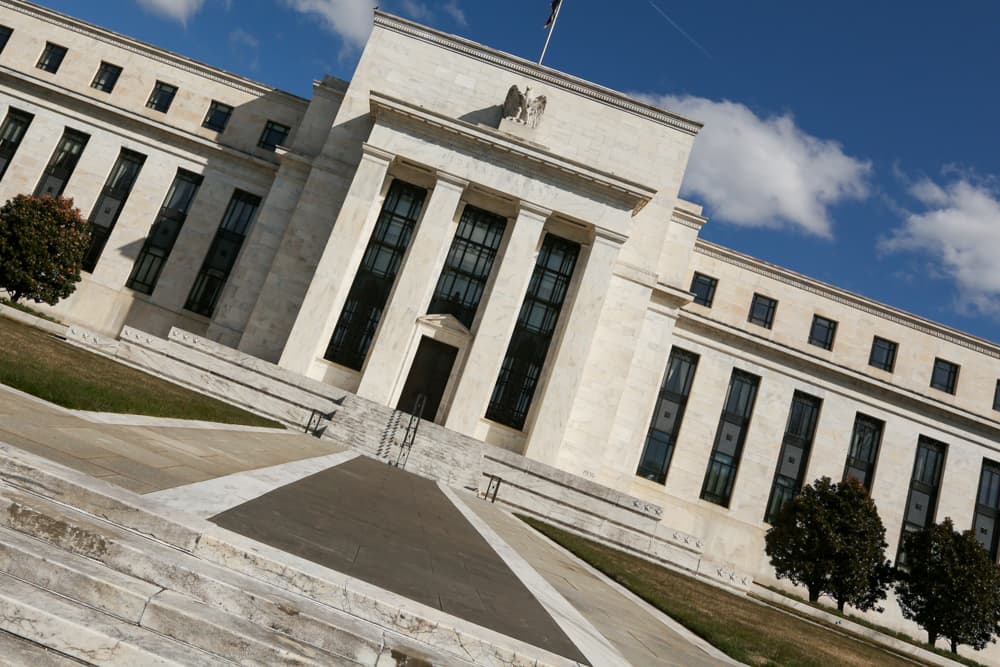The U.S. Federal Reserve building in Washington, D.C.
Adam Jeffery | CNBC
Markets now expect the Federal Reserve to cut interest rates twice by late January as economic signs continue to weaken and Wall Street stumbles through another rough patch.
Futures trading indicated a 63% chance of a September cut and a 62% probability of another easing by late January, according to the CME's FedWatch tool.
The market-implied funds rate is 2.1% by the end of 2019, compared with the current target range of 2.25% to 2.5% for the Fed's benchmark.
Anticipation for a rate hike comes just a week after minutes from the Federal Open Market Committee meeting earlier this month indicated that members had a strong level of confidence in the economy, with members saying they were even marking up their GDP estimates for the full year. The meeting summary said no moves would be coming "for some time."
However, a number of indicators have changed since then, and government bond yields are pointing to an economic slowdown. The benchmark 10-year Treasury traded around 2.21% at midday Wednesday, a level it has not seen since September 2017 and, importantly, below the fed funds rate that banks charge each other for overnight lending.
Several points in the bond curve have seen inversions, where shorter-dated debt is yielding higher than securities farther out on the curve, a development that historically has been a reliable recession indicator over the ensuing 12 months. One key relationship, between the three-month bill and 10-year note, is now inverted by 14 basis points.
Should the Fed decide to lower rates, it would be consistent in one way with its history.
Since 1983, the average length from the last rate hike to the next rate cut has been seven months. The most recent tightening came in December, so a move in the other direction for September would be a lag time of 10 months. In their March projections, Fed officials indicated no action for rates this year, and multiple policymakers have said they are comfortable with a "patient" approach.
However, that can always change.
"History is on the side of the financial markets versus policymakers' official projections," Joseph LaVorgna, chief Americans economist for Natixis, said in a note Wednesday.
The FOMC next meets June 18-19. Markets expect just a 13% chance of a rate cut then, though the number has moved sharply higher over the past week.


